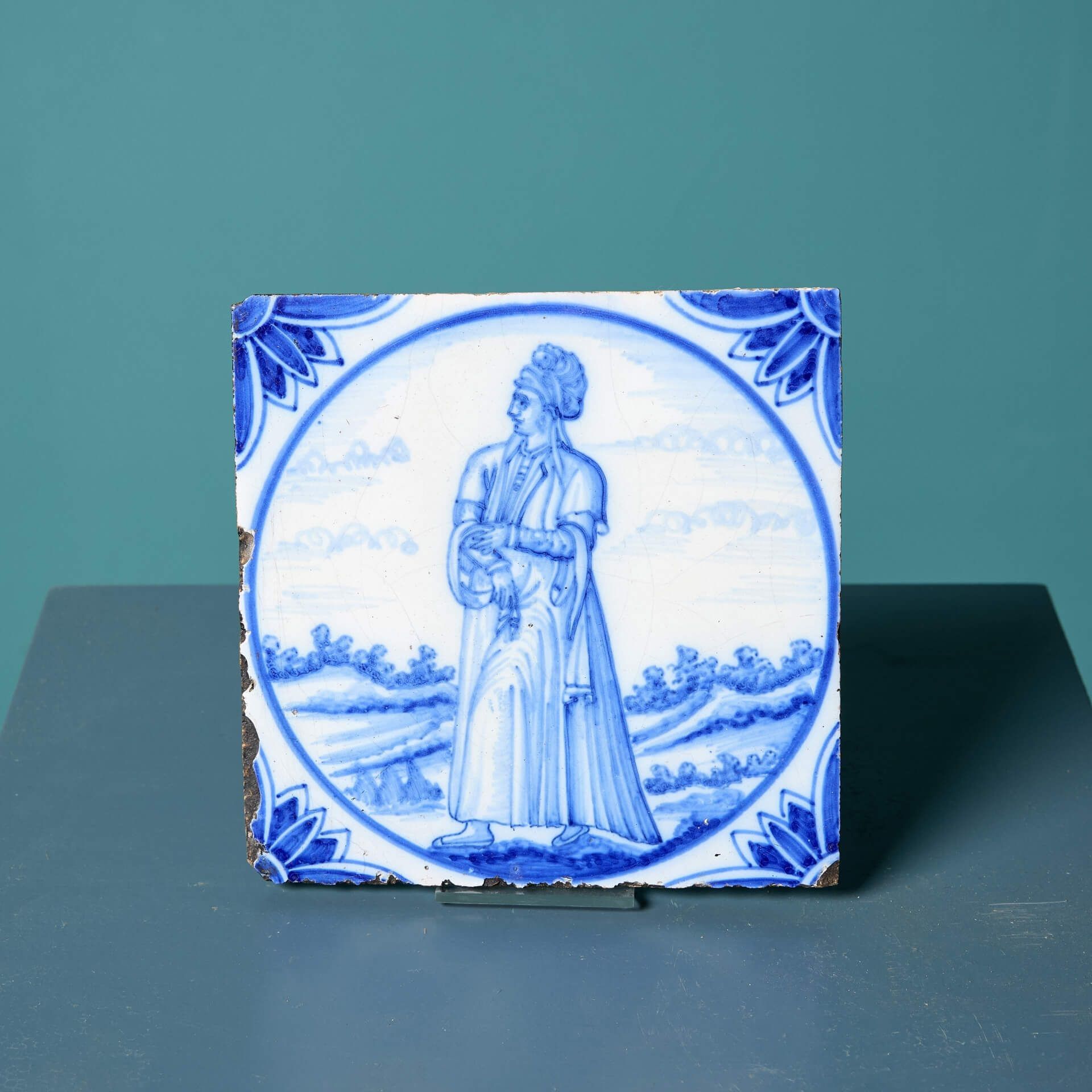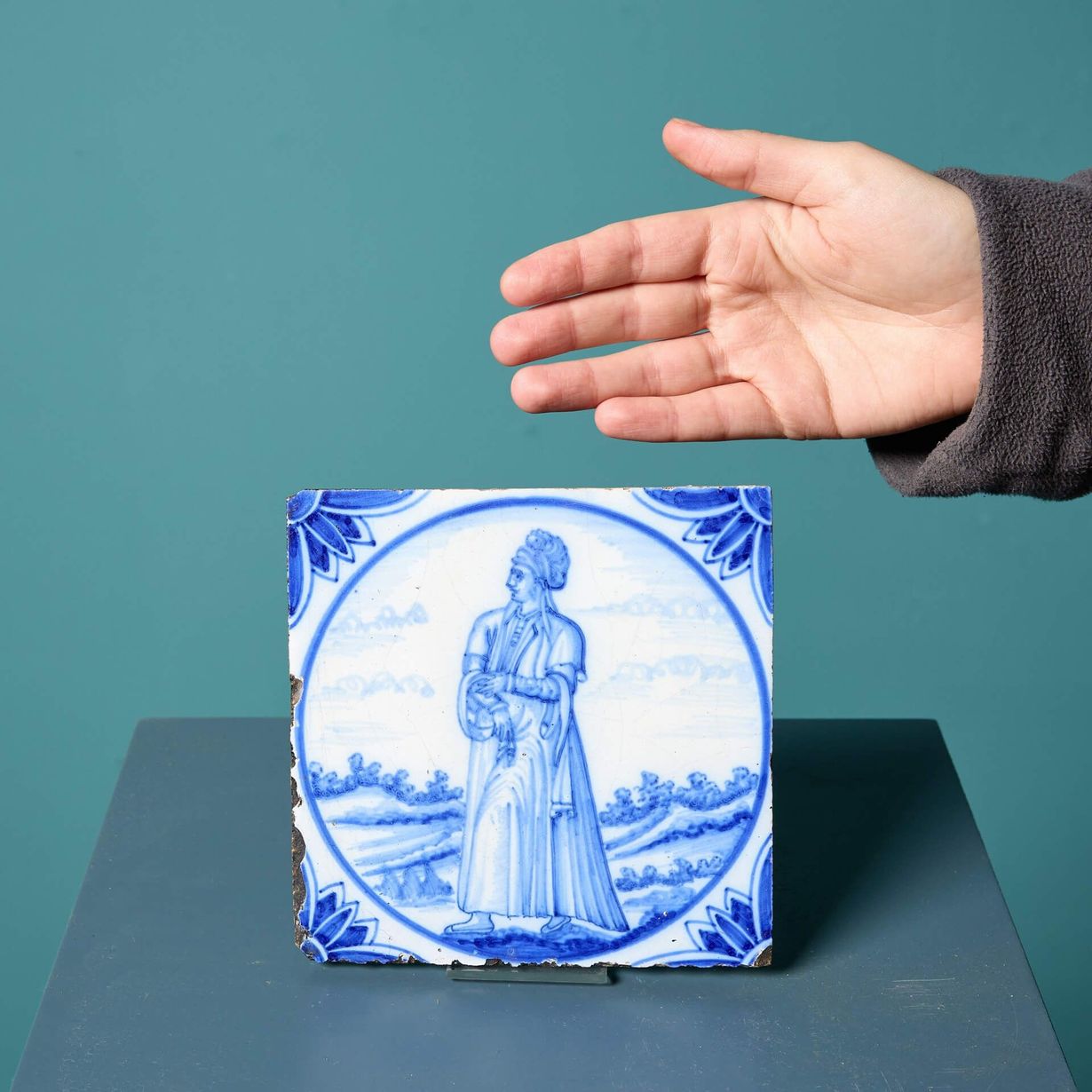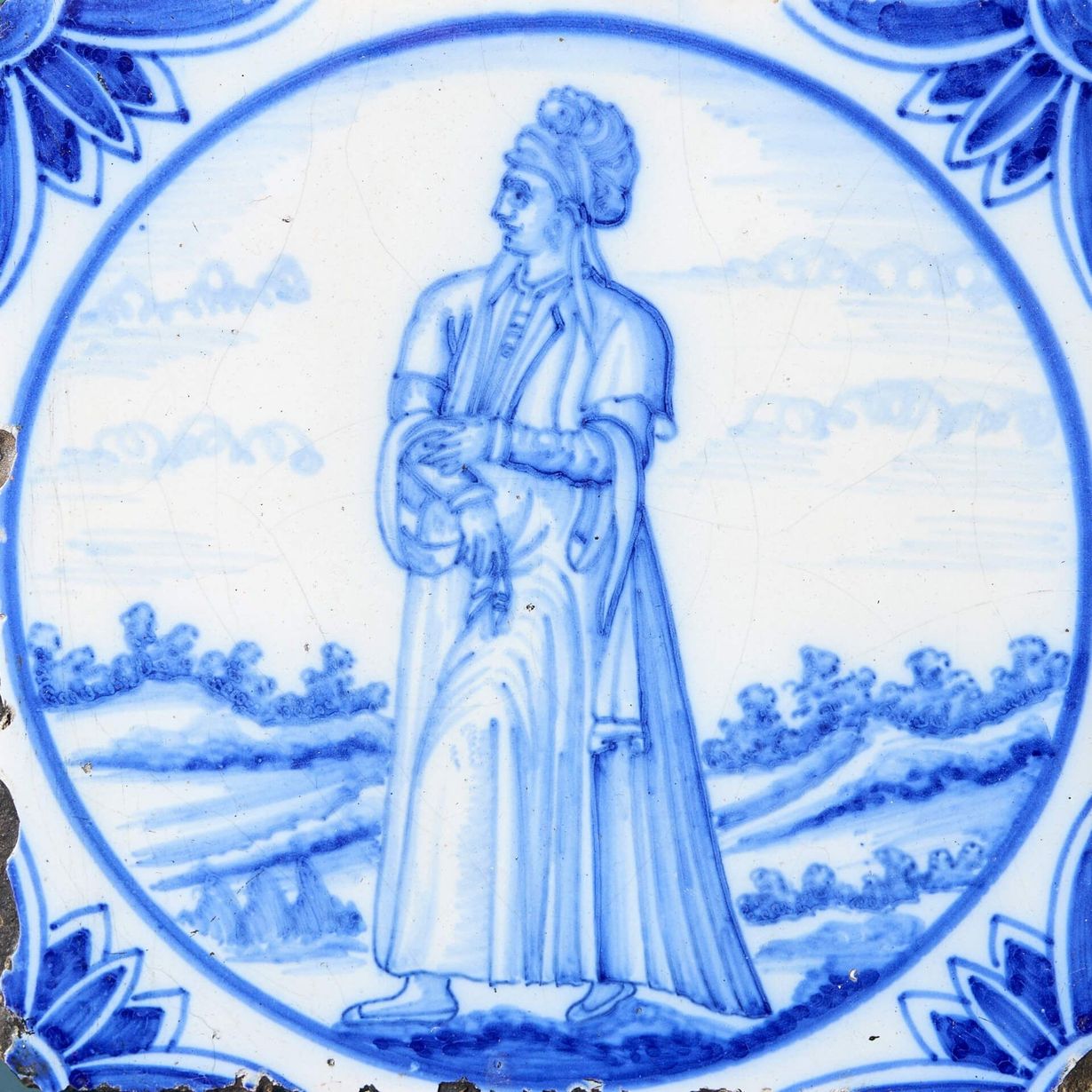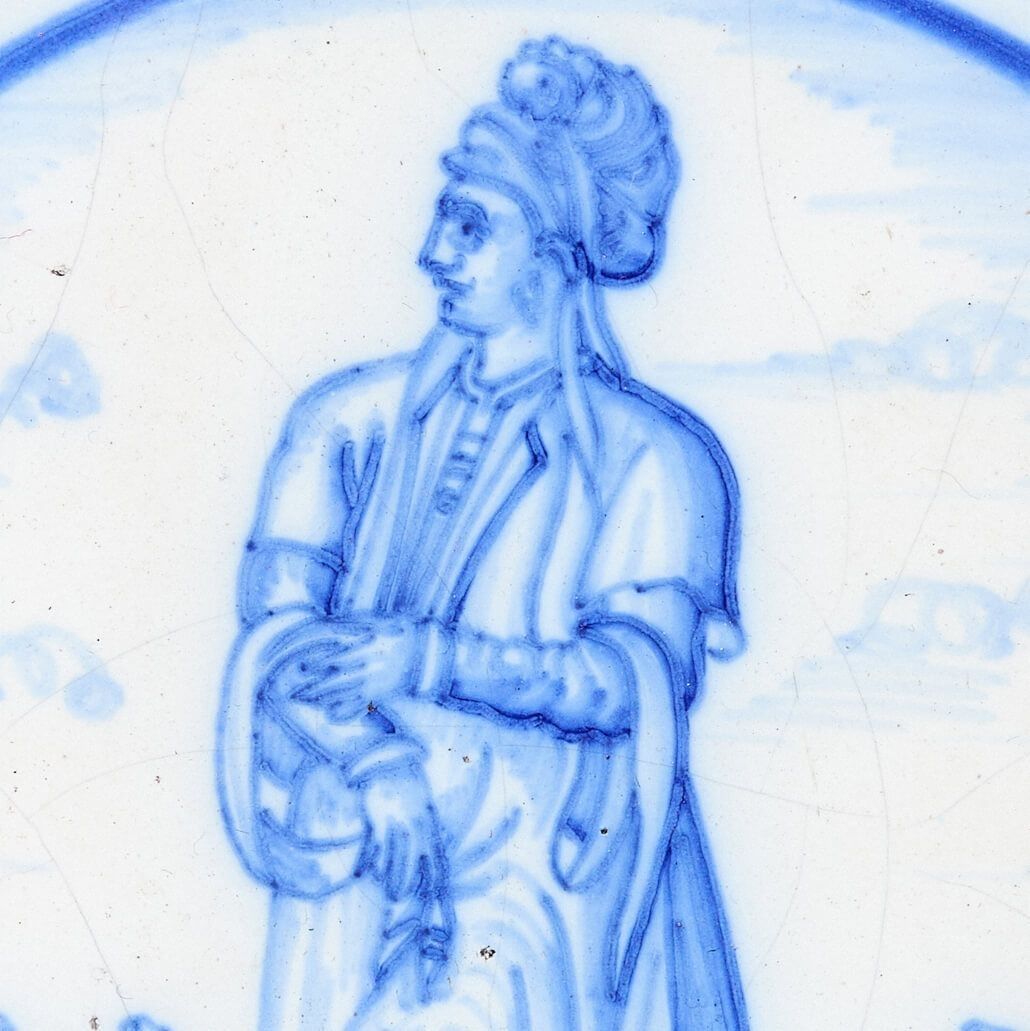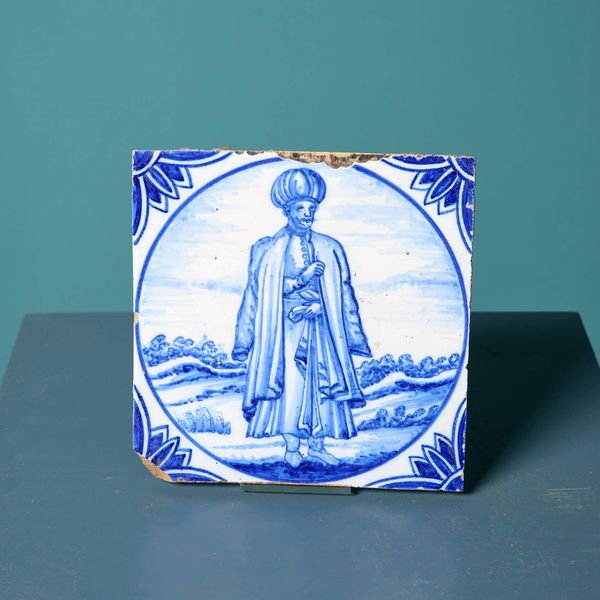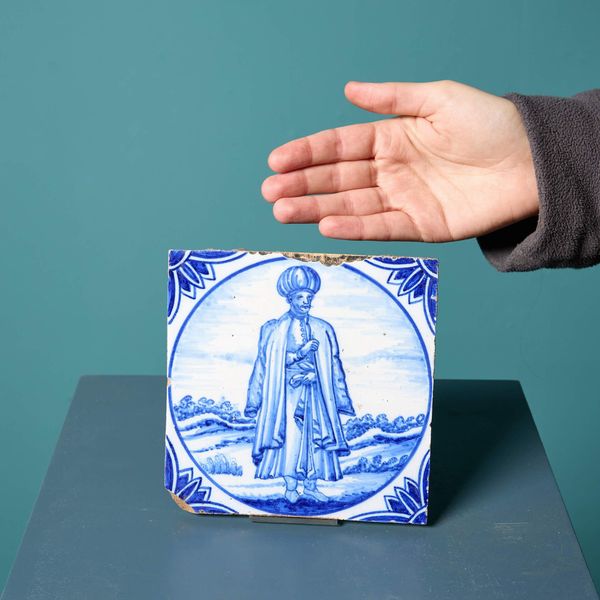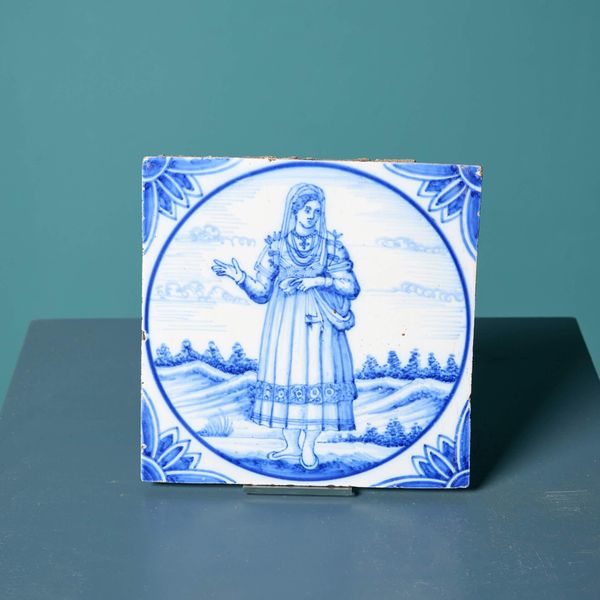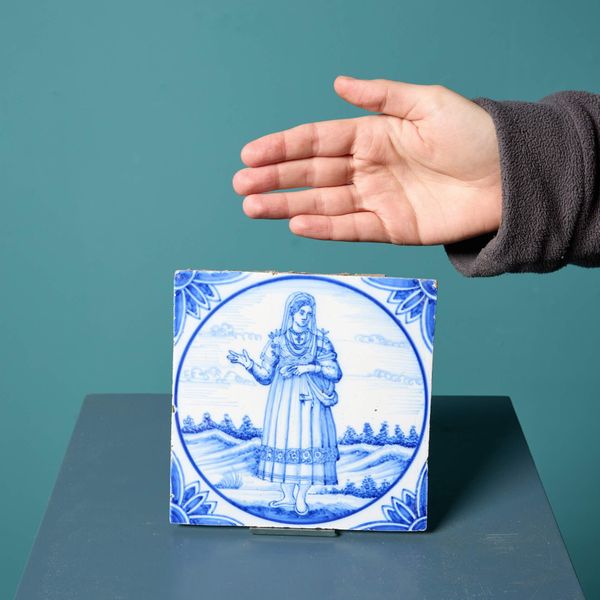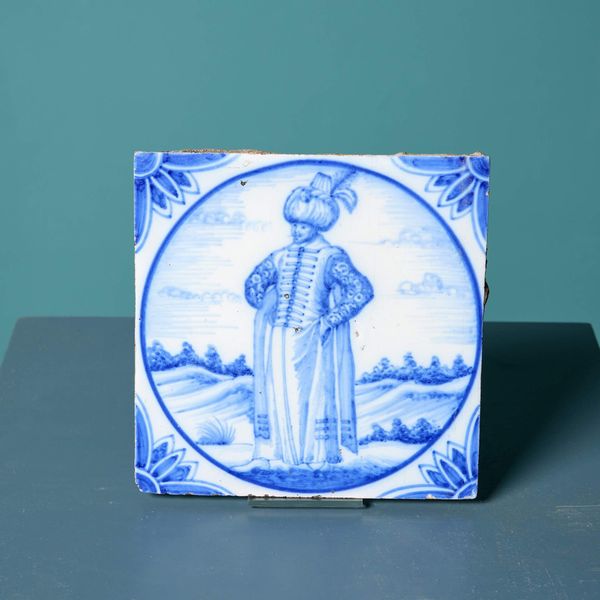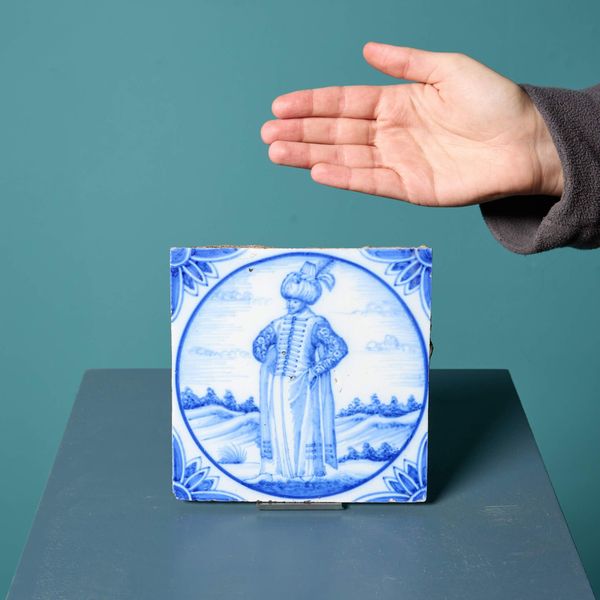About this piece
back to topAn antique Delft tile of a figure in Turkish dress, by Ravesteijn of Utrecht, after the original drawing by Nicolas De Nicolay dating to circa 1551.
Dating to circa 1870, this striking tile has been in use for over 150 years and as such has a characterful, timeworn look.
The Dutch 6inch tile displays a man in Turkish dress in a rural scene with sunflower spandrel to the corners. The illustrations are handpainted in an expressive blue on a white background.
This figure represents 16th century Ottoman life, taken from the Dutch translation of the book Navigations et pérégrinations orientales by Nicolas de Nicolay, published in Lyons, 1568.
Ravesteijn of Utrecht took inspiration from his drawings in the 19th century made in a special format for the English market. Foundries, such as Coalbrookdale in Ironbridge and Thomas Elsley in London, were known for setting them into iron fire grates.
Nicolas De Nicolay (1513-1587)
The artist, geographer and spy Nicolas de Nicolay had his work first published in French in 1567 and quickly translated into other European languages. This was a combination of a travelogue with a survey of the Ottoman Empire.
Ottoman Empire, also known as the Turkish Empire, was an imperial realm that spanned much of Southeast Europe, West Asia, and North Africa from the 14th to early 20th centuries.
A print of Nicole’s illustration on which this tile is based forms part of the collection of The British Museum, see here.
Delft Tiles
Delft dates back as far as the early 1500s. The Dutch city of Delft, after which the pottery is named, was the major centre of its production. Tiles and pottery made from Delft are applied with a tin and magnesium glaze that gives them their distinctive purple-blue colour.
Their well-known blue and white tiles appeared around 1620 and became world famous, the tiles often painted with scenes from daily life and used to decorate kitchens, chimneypieces, staircases and more.
We have four similar tiles available.
Additional dimensions
Tile measures at 15cm x 15cm (5.9in x 5.9in).
